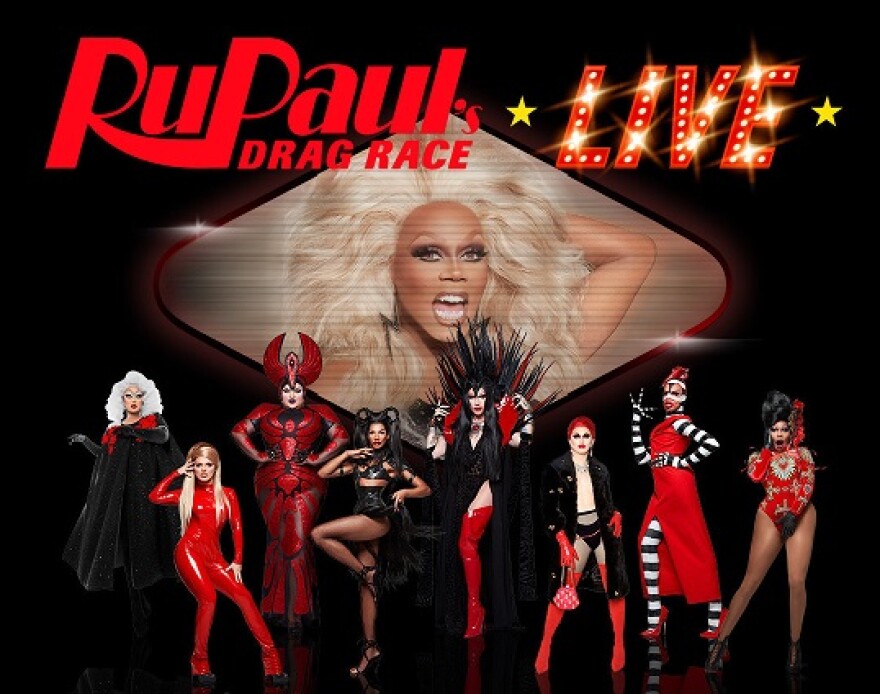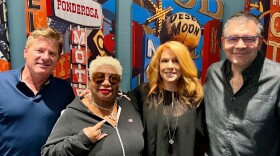Nevada has a dark history when it comes to LGBT folks. But somehow, drag queens have been a part of Las Vegas entertainment for almost 100 years.
It dates back to when female impersonators braved crowds on Fremont Street in the 1930s; to the Kit Kat drag club in the 1940s; to the explosion of drag both on the Strip and off in the 1980s; and Cirque du Soleil hiring a popular drag queen from New York City for its new Zumanity show in 2003.
Now, drag has gone mainstream. The Emmy-winning RuPaul’s Drag Race inspired a live version for the Strip, which also hosts a weekend drag brunch. Drag queens are now reading to children in Nevada libraries.
And for COVID: There’s a special online concert film that features several Las Vegans onscreen and off.
So how did drag queens expand their audience and gain such acceptance?
Toni James is a longtime local drag performer who has worked stages in both the big resorts and local gay clubs.
"I did it simply to do shows for work purposes only," James said. "And I've been doing it in Las Vegas for 27 years, and it's been really lucrative for me all these years."
When he started, James impersonated Diana Ross, but now he is a master of ceremonies for shows. In addition, he uses his skills as a world champion baton twirler in his act.
James started playing the Strip in a show called Boylesque with Kenny Kerr, which ran for 30 years. James said even though there was a lot of discrimination against gay people during the time the show was going, people were still drawn to it.
"It is exciting to watch, especially when you're doing look-a-likes. People can't believe that a guy can look like Diana Ross or Whitney Houston or Cher or any of the famous superstars that a lot of us impersonate."
James also said that a drag performance is really fun.
Drag queen Coco Montrese agreed. He said people like to see a drag show in Las Vegas because it is not something they're going to see at home.
"Here in Las Vegas, drag has always been a part of the Strip," he said. "People have always come to see drag because they want to get away from the norm."
The irony is that people who love the show on stage didn't always treat the performers well, Montrese said. "They love me on stage, and then they have a different kind of opinion when you're not on stage. It is starting to get better, but it is still a challenge."
One of the biggest things to happen to the art form was the arrival of RuPaul's Drag Race.
RuPaul had made a name for himself with pop hits in the '90s, but it was his hit TV show featuring drag queens from around the world that pushed drag into the mainstream.
Montrese was featured in the show, and he said it changed his life. "With RuPaul's Drag Race, I was able to actually go on and follow the business side of entertainment. I was able to actually start my own business as Coco Montrese."
Before he appeared on Drag Race, Montrese would take off his makeup and costume and people wouldn't know him. But now, because the show features so much of the queens' transformations, people stop him on the street.
In fact, some of the people who have stopped him have surprised him. One time, Montrese was stopped by a father and his football-playing son, who said how much they loved the show and loved him.
Drag has become so much part of the mainstream that libraries across the country, including in Las Vegas and Sparks, have hosted Drag Queen Story Hour.
Montrese said it is important for kids who feel different to see people who are different. "People who aren't different like that don't sometimes understand how it affects kids at a young age. For them to be able to see someone like that and have someone read to them, it makes them a little more comfortable inside with whatever decisions they're going to make in life."
A lot of drag performers lipsync to the music of the performer they're impersonating, but a show that began at a theater in Los Angeles and featured several Las Vegas performers changed that.
" Dragapalooza" came to fruition in part because of Las Vegas natives Ann Potenza and Chris Cox.
They decided to have drag performers sing to live music after talking about the drag performers they knew.
"They are so talented and most of them just get to lipsync in a lot of their productions, but some of them can really sing," Potenza said.
After the first show in LA, word started to spread, and the show was staged at other theaters around the country. The film "Dragapalooza" is from the production's last few shows.
Potenza also credits RuPaul's Drag Race for bringing drag culture to the mainstream. "When did our first show, we had everyone at our show. We had parents bringing their children. We had couples that were there, whether they were straight or LGBTQ. It didn't matter. We had all ages."
She said the drag queens are all performers who are giving "a part of their soul on stage."
Coco Montrese, performer; Ann Potenza, producer, Dragapalooza; Toni James, performer









